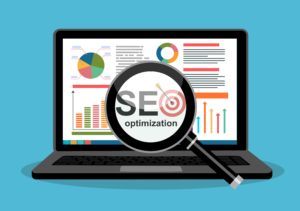
The goal for this Google Adwords tutorial for beginners is to help you run your first pay-per-click advertising campaign. At anova we have been helping clients maximise their digital marketing portfolios for years. We have distilled this experience into the simple, six-step guide you see before you.
Welcome to the only Google Adwords tutorial for beginners you’ll ever need!
Audience and keyword research
Before you run your first pay-per-click advert, you need to establish the keywords you will use to target it. While Adwords offers its own keyword planning facility, you may find it useful to start with a more traditional technique.
Feedback from your existing customers is invaluable. Online surveys can provide a lot of useful information, as can direct feedback to your customer service department. This is particularly helpful if the feedback is unsolicited, as it will highlight the clients’ priorities.
Researching your competition can also pay dividends. Naturally, you don’t want to copy their keywords wholesale, but it will give some indication of what to shoot for.
Once you’ve sourced your keywords, pop them into Google Adwords’ keyword planning tool. This lets you see the search volume and typical cost-per-click for each keyword, allowing to you weight them accordingly. It will also recommend other likely keywords that did not make your list.

Keyword match types
Now we move onto the meat of this Google AdWords tutorial for beginners: how to match your keywords.
Not everybody searches for things in the same way. For instance, the terms ‘stationery’, ‘buy stationery online’ and ‘stationery near me’ are looking for the same thing, but produce different results. The intent to purchase is there, and it’s your job to match your brand to that intent.
This is where keyword match types can help.
‘Broad match’ offers the most flexibility in a search term. It lets you bid on any search that includes your keywords. If your keyword is ‘ladies stationery’ you’ll get a successful match for the phrase itself, as well as ‘stationery for ladies’, ‘ladies stationery store near me’, ‘hand-printed stationery suitable for ladies’, and so on.
‘Phrase match’ looks for searches that include your keywords as you enter them, but also allows other text. In this example ‘ladies stationery store near me’ would produce a hit, but ‘hand-printed stationary suitable for ladies’ would not.
‘Exact match’ will only display your ad if a user searches for the exact keywords and nothing else.
You should also consider negative keywords. These pull your advert from any bidding auction if they form any part of the search term. If you don’t sell hand-printed ladies stationery, for instance, put ‘hand-printed’ in your negative keywords. This stops your ad being displayed to a customer looking for something you don’t supply.
Creating a pay-per-click ad
The next step in our Google Adwords tutorial for beginners is the copy. Just as keywords improve your chance of appearing in a search result, quality copy improves your chance of attracting a client to your product.
Google has a standard template for its pay-per-clicks adverts, known as ETA, or Expanded Text Ads. This is comprised of three distinct elements.
Headline: this becomes your adverts highlighted text link and is most visible to users. Be sure to make it count.
Description: a longer field, displayed as plain text. This is where you entice the user with more detail and a reason to click your ad.
Destination URL: the landing page for your paid advert. Great ad copy won’t help you if the advert links to a poorly designed landing page.
Campaigns and ad groups
We’ve got our keywords, we’ve got our adverts – now it’s time to put them together into ad groups and campaigns.
Returning to our stationery example: we start by creating two or three ads with different copy to maximise keyword coverage for ‘ladies stationery’. This forms an ad group, the contents of which will run concurrently, depending on the search term that has been entered.
If you then introduce a new product (hand-stitched notebooks, let’s say), we take things to the next level by creating a campaign highlighting that new item.
This brings the right advert to the right people. A search for ‘ladies stationery’ will result in on of the adverts from your ad group being displayed. A more specific search for ‘ladies stationery notebook’ or ‘hand-stitched ladies stationery’ will trigger your campaign ad instead, matching the user’s intent to purchase.
Bidding
The heart of Adwords is its bidding structure: you bid an amount for a set of keywords. This is how much you’re prepared to pay every time somebody clicks on your advert. Other people are bidding on those same keywords for any given search, but none of you knows what the others have bid. Luckily, the amount you pay is not your maximum bid, but the second-highest bid, plus 1 cent. This can mean you pay considerably less than your bid if the keywords in question are not in demand.
You can choose from automated or manual bidding.
With automated bidding, you give Google a campaign objective (traffic, conversion, etc.) and set a daily budget. Google’s own algorithms will do the rest. While a tempting proposition, the lack of genuine feedback and the inability to tinker can result in an expensive campaign for little return.
Manual bidding is more time-intensive, but you can control every aspect of the bid, from amounts to timing, demographics, and beyond. Learning what changes work best for you will not be an instant thing, but will reap dividends in the long-term.
Regular revision and optimisation
Once your adverts are up and running, they will require regular supervision. A careful eye must be kept on performance so that you can adjust any aspect of your advert from keywords to bidding, whenever necessary.
The key figures to monitor are click-through rate, conversion rate, cost-per-click, and cost-per-acquisition. All these can be found in the Google Adwords interface, where they are updated in real time.
We hope this Google Adwords tutorial for beginners has been enlightening. For more information and advice on running a successful Google Adwords campaign, get in touch with anova today.


